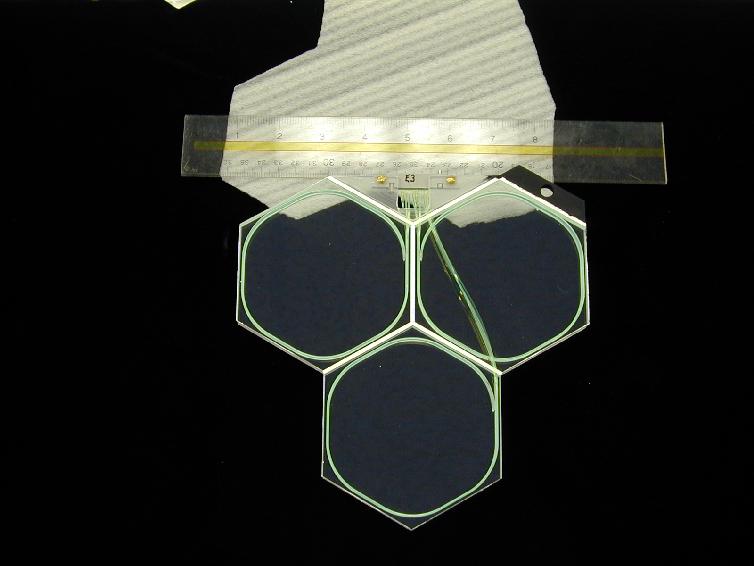STAR Beam-Beam Counter (BBC) Small Hexagonal Scintillators
The BBC scintillators were cut from 1-cm thick Kuraray
SCSN-81 by Fred Pompei. Regular hexagonal tiles were defined by cutting
2-mm wide and 5-mm deep optical isolation grooves in a Mercedes pattern
from both sides of the scintillator, and then back filling these grooves
with MgO2 -loaded epoxy. Since grooves
were cut on both sides, the optical isolation was complete. After
machining, the sides of the hexagons were covered with white reflecting
paint to trap scintillation light within each tile. Each scintillator
surface was then covered with 1-mil thick aluminized mylar, taped to the
painted scintillator edges. The reflectors were then covered by 10-mil
thick black construction paper and black electrician's tape, to make the
assembly light tight.

Other features of interest are:
-
scintillation light produced within a tile was collected
by four 0.83-mm diameter Y-11 doped optical fibers, inserted into grooves
machined within the depth of the scintillator from both surfaces.
The ends of the fibers are aluminized. The grooves ramp down from the scintillator
surface and have fiber guides cut to trap the optical fibers. The
fibers form a nearly circular loop, within a distance of 2-mm from the
isolation grooves limited by the 3-cm minimum bend radius of the fiber,
to ensure response uniformity independent of where an ionizing particle
penetrates the tile.
-
a tab with a circular hole is optically isolated from the
upper right tile and is used for mechanically mounting the scintillator
triplet to the support frame. This tab is painted black.
-
an optical connector is attached to a landing machined into
the scintillator, optically isolated from the tiles. Twelve WLS fibers
are glued into this two-part connector. The second connector part
(not shown) has twelve clear fibers glued into it and is mated to the first
by screws.
Back
Last Update: 6 April 2002
LCB

